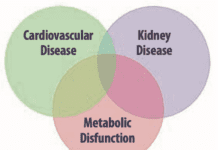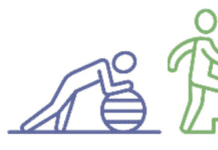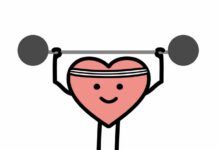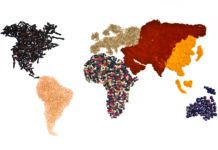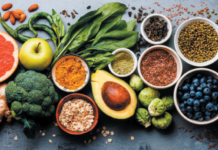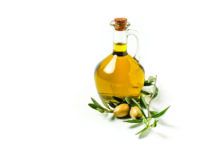You see them everywhere: “The ten best/worst foods for your health.” “The top five reasons you should eat/avoid particular foods.” These lists are eye-catching and can be fun to read, but they may not be the best way to get your nutrition information. And we’re going to give you the top three reasons why!
1. They are often based on insufficient information. Some lists are based on research and measurable, complete facts, but many are simply opinion pieces or collections of ideas. “The information in lists is frequently drawn from a small selection of studies that may not be representative of the totality of the data,” says Alice H. Lichtenstein, DSc, professor at the Friedman School and executive editor of Tufts Health & Nutrition Letter, .
Additionally, lists of foods to eat (or avoid) generally don’t consider one’s whole dietary pattern. “We don’t consume isolated foods in a vacuum,” says Lichtenstein. “If one food is a healthy choice, it can’t make up for an overall unhealthy dietary pattern. Nor can consuming an occasional treat ruin the positives of an overall pattern of good choices.”
What to Do: Find trustworthy sources of information (like the Tufts Health & Nutrition Letter!). Make sure the goal of the organization providing the information is to educate, not to sell something or promote certain foods.
“Media articles can help you keep up with the latest information,” says Dariush Mozaffarian, MD, DrPH, dean for policy at the Friedman School and editor-in-chief of this newsletter, “but keep in mind that news organizations are under pressure to recruit readers and get ‘clicks.’ This increases the temptation to exaggerate the importance or surprise factor of any new finding. Nutrition research is notoriously complex, requiring careful consideration of study design, populations, interventions, and other factors like genetics, the gut microbiome, and the environment. Conflicting or contradictory results are therefore common. Expertise is required to review and take into consideration all the research on a topic and understand the total weight of the evidence.” Helpful nutrition information is therefore most likely to come from university scientists who can accurately review and integrate all the information available, as well as from reputable health advocacy organizations like the U.S. Dietary Guidelines scientific committees and other national organizations like the American Heart Association, American Cancer Society, American Diabetes Association, Academy of Nutrition and Dietetics, and American Society for Nutrition.
“Look for common conclusions and recommendations from all these sources: universities, the media, and multiple respected national organizations,” says Mozaffarian, “and always keep in mind, as in any science, when new information emerges, recommendations are reevaluated and sometimes modified. That is the nature of science.”
2. They necessarily oversimplify. Listicles are designed to be short, readable, and entertaining. They are not a good format for capturing pros and cons, digging deep, or exploring complicated ideas. Presenting information in a simple, understandable way can be helpful, but only when that information is complete and free from bias.
For an example of how lists oversimplify complex information, let’s look at bananas which often top lists of “the worst fruits you can eat.” These portable fruits are an excellent source of potassium (which helps control blood pressure) and fiber. They also provide a healthy dose of vitamin C, vitamin B6, magnesium, and manganese. Although some sources state bananas cause weight gain, there is no evidence to support that claim (and some evidence to the contrary). While some lists claim bananas are bad for digestion, they are on a short list of foods typically recommended as easy-to-digest for people with diarrhea and/or vomiting and help replenish electrolytes lost with these ailments. While it is true that bananas are high in natural sugars, they are also high in resistant starch—a type of carbohydrate that is not broken down in the small intestines. Similar to fiber, resistant starch slows the release of sugars into the bloodstream and feeds beneficial gut bacteria. (The less ripe the banana is, the more resistant starch it has.) “As with other fruit, very ripe bananas may raise blood sugar more than less ripe fruit, but the fiber in the fruit should slow down absorption of the sugars,” says Richard Siegel, MD, co-director or the Diabetes and Lipid Center at Tufts Medical Center. “I feel that any whole unprocessed fruit, including bananas, is fine for anyone to eat as part of a balanced diet. People (with or without diabetes) should aim for several servings of whole fruit spread out over the course of the day. I would not call a banana a ‘worst’ food. I eat one myself on most days of the week.”
In addition to running the risk of oversimplifying, lists also suggest “number one” is the best (or worst). “Are they really presenting the best, then the next best,” says Lichtenstein, “or just a list of related items?”
What to Do: Look for detailed information. The list should explore pros and cons, mention conflicting research if there is any, and acknowledge any generalizations being made. Following the advice presented above for finding trustworthy sources can help.
3. They may encourage limiting choices within and between food groups. Placing
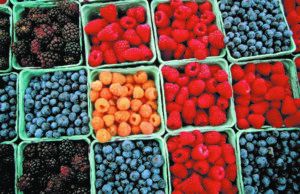
Blueberries may rank on “top foods” lists, but other berries are nutritionally similar, making them excellent choices, too.
a food at the top of a list may make it seem like it’s head and shoulders above other foods in its food group. “In fact, there is tremendous overlap in the nutrients in similar foods,” says Lichtenstein. “For example, all berries provide fiber and generally similar vitamins and minerals. Hence, it is unlikely one type of berry will be significantly better for you than another type of berry. Likewise, eating fish is a good choice. Splitting hairs over which fish is the best is not helpful. What if you don’t like that type of fish, it’s not available in your area, or doesn’t fit in your food budget?”
Even if you love the top-ranked foods, emphasizing them too heavily in your dietary intake can cut out other choices that might add nutritional variety. Yes, berries are great choices, but the nutrient content of many other fruits, like citrus fruits, pineapple, kiwis, cherries, and mangos, for example, is also excellent.
Variety between food groups may be even more important than variety within food groups when it comes to getting all the essential nutrients. “Eating a variety of food groups helps to ensure balanced intake of important nutrients,” says Lichtenstein. “For example, many fruits and vegetables are rich in vitamins A and C, but low in vitamin B12. Dairy products are rich in calcium and riboflavin but low in iron. Seafood, chicken, meat, dairy and eggs supply B12 and iron.”
(Those following strict vegan diets may find it challenging to meet their B12 requirements since this vitamin is only found in animal products. Fortified breakfast cereals and other fortified foods are option for this vitamin, but supplements may be necessary.)
What to Do: You don’t have to make a single food a big part of your diet (or exclude it entirely) just because it is listed as particularly good (or particularly bad) for your health. Don’t like that “best” food? Eat something else from that food group instead. “For sustained improvements in one’s diet,” says Lichtenstein, “it’s important to incorporate foods one enjoys and that are available.”
An overall healthy dietary pattern is best. This means making choices over time that emphasize fruits, vegetables, nuts/seeds, beans/lentils, whole grains, fish, and yogurt and limit red meat, processed meats, and foods high in sodium, sugar, and refined starches. Thinking in terms of a pattern of eating instead of a strict list of foods or food groups to eat or exclude gives you leeway to include a variety of foods you enjoy. Eat a variety of healthy foods across and within different food groups to make sure you get the wide range of the nutrients your body needs.
- Don’t limit yourself. Consider an item on a list as an example of a healthy choice. Eat that food (if you like it and it is readily available) and other foods from the same food group.
- Go for variety. Be sure to eat foods among and within all food groups—focusing on mostly whole and minimally processed choices—to help your body get the variety of nutrients it needs.
- Look for balance and detail. Lists typically don’t discuss all pros or cons, point out relevant conflicting research, or offer references.
- Look for balanced, detailed presentations. Find sources your trust. Always cross-check something you learn with trusted sources, including scientific sources, reputable national organizations, and your health-care provider.



